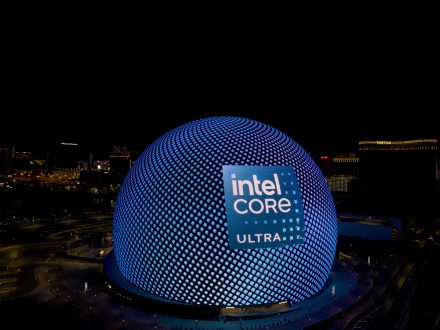Intel: “One in Five Chips Manufactured Next Year Will Target AI Environments”

Intel continues to push its IDM 2.0 strategy at a time when the technology industry already accounts for 15% of global GDP. And semiconductors continue to gain prominence.
Three years ago, Pat Gelsinger took the reins at Intel as CEO of the company. It was a delicate time when the company was considering selling its factories to focus exclusively on semiconductor design.
In the end it did not happen, thanks mainly to Gelsinger’s decision to continue to focus on these facilities through its IDM 2.0 strategy, the way forward for designing, manufacturing and delivering these types of products, something that few companies worldwide are currently able to achieve.
Moreover, Gelsinger announced a major expansion of its worldwide factories and foundries through investments of billions that will enable it to meet domestic demand, as well as the creation of a separate business unit -IFS, Intel Foundry Services- to also manufacture third-party semiconductors.
An enormously aggressive and ambitious plan, but for Gelsinger it was a winning formula in a sector that is constantly growing and increasingly critical in the world economy.
Norberto Mateos, Director of the Corporate Sector in the EMEA territory and General Manager of Intel in Spain, confirmed this in the traditional press conference at the beginning of the year with the technology media: “We are at a very interesting moment in which the technology industry already accounts for 15% of GDP worldwide, but it is also growing 2.5% faster than other industries, so this percentage will grow even more in this decade”.

Meanwhile, the semiconductor market is also gaining relevance as part of this growth as it brings together the essential components for any type of computing process within Information and Communications Technologies.
“If we think about it, the world we have lived in the past decades has had oil as a common denominator. All industrial transitions have taken place thanks to this natural liquid and energy. However, the economic development of the next five decades will revolve around semiconductors. And everyone is trying to position themselves behind semiconductor manufacturing,” he said.
This is an extremely demanding market in which billions need to be invested every year to maintain the advances and innovations we have seen in recent decades. It is a market in which Intel wants to remain at the top. In fact, it has retaken the top position if we look at the semiconductor ranking of the ICT market (for the global chip market, TSMC maintains an undisputed leadership), with Samsung in second position (according to Gartner data).
As part of these innovations, there is a clear trend that is influencing semiconductor manufacturing: artificial intelligence. According to Intel’s forecasts, approximately 20% of the chips to be manufactured next year will be destined for AI environments, which is a really significant percentage. These chips will not only be dedicated to data processing, but also to information storage, as Mateos emphasized.
Another factor that is shaping the future of semiconductor manufacturing is geopolitical instability, which is having a negative impact on all sectors. “Unfortunately, Europe only manufactures 10% of the total number of chips worldwide, so we are very dependent on other regions to ensure the supply chain of all related products,” said the executive.
As part of Gelsinger’s strategy, Intel is committed to increasing chip production in the European Union to reduce this dependence. This is being done, together with the European authorities, through an investment of more than 95 billion euros over the next few years to build new factories on the old continent.
Mateos also identified the main markets that will demand more chips in the coming years. We are well aware of the needs in computing, storage and wireless connectivity, but the automotive segment is demanding more and more of these components. Intel’s estimate is that these markets will generate 70% of total IC demand by 2030.